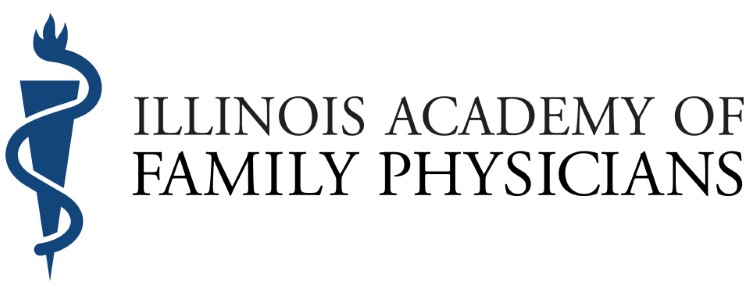- Home
- About IAFP
- Membership
- Education
- IAFP Online CME
- Early Detection of Alzheimer’s Disease and Dementia
- Essential Evidence Update Conference
- KSA
- Illinois Vaccinates Against COVID-19 (I-VAC)
- IL Mandated CME Requirements
- Immunizations for Adults
- Lifestyle Medicine
- Obesity Care - Primary Care Workshop
- Diabetes Self Management PI
- RSV Prevention in Infants
- Resources
- Advocacy
- Foundation
- Family Medicine Midwest
 |
 |
 |
| Written by Ginnie Flynn |
| Thursday, March 21, 2019 03:25 PM |
WorkforceMore Americans depend on family physicians than on any other medical specialty. This is especially true for patients in rural and underserved areas. Family physicians perform a wide range of services including general practice, labor and delivery, emergency medicine, surgery and procedures, pediatrics, hospital medicine, and geriatrics. Collectively, they’re responsible for approximately one in five of all medical office visits in the United States per year—more than any other specialty. What is Primary Care? Research continues to show that primary care is critical to the health of individuals and improves health outcomes. Primary care helps prevent illness and death and is associated with a more equitable distribution of health in populations. A study found that patients who identified a primary care physician as their usual source of care had lower five-year mortality rates than patients identifying a specialist physician as their usual source of care. Internationally, a study found that the populations of countries with higher ratings of “primary care orientation” experience better health outcomes and incur lower health care costs than populations in countries with lower degrees of primary care orientation. What Are the Benefits of Primary Care? In the United States, the states with higher ratios of primary care physicians to population have lower smoking rates, less obesity and higher seatbelt use than states with lower ratios. Pooled results for all-cause mortality suggest that an increase of one primary care physician per 10,000 population was associated with an average mortality reduction of 5.3 percent, or 49 per 100,000 per year. Urban and rural communities that have an adequate supply of primary care physicians experience lower infant mortality, higher birth weights, and immunization rates at or above national standards despite social disparities. Office Visits to Physicians by Specialty: In 2014, Americans made nearly 900 million visits to office-based physicians with more than 52% of those visits were made to primary care physicians. Despite being just one-third of the health care workforce, half of all physician office visits are to primary care physicians, and primary care providers provide the majority of visits for most people with chronic conditions. The largest number of office-based primary care physician visits (nearly 200 million) were to family medicine. Visits to general internists and general pediatricians represent the second and third most-visited specialties, with more than 224 million combined visits. Sources: Teaching Health CentersIAFP Supports Teaching Health Center funding - in print, on the air and on Capitol Hill. Link to the IAFP's statement on funding family medicine education IAFP Alternate Delegate to AAFP, Santina Wheat, MD participated in a Congressional Briefing on Feb. 18, 2020 to urge re-authorization and stability of the Teaching Health Center program. Read her remarks. Dr. Wheat and THC resident Kevin Volkema, DO appeared live on WBEZ radio Feb. 26 to talk about the value of THCs to the community and workforce. Read the Letter to the Editor published in the Chicago Sun-Times. The Teaching Health Center Graduate Medical Education (THCGME) Program was re-authorized by Congress by September 30, 2019. Sustained extension and more funding will also allow for the expansion of new programs within existing centers and the creation of entirely new teaching health centers while emphasizing the importance of establishing sustainable funding. More information is available via the American Association of Teaching Heath Centers. |
| Last Updated on Monday, December 16, 2024 05:22 PM |



